
Who's more important to save: your friends, or yourself?

Who's more important to save: your friends, or yourself?
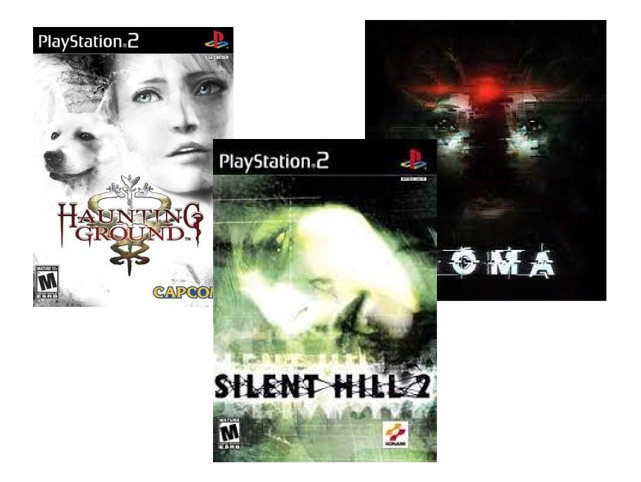
So here’s a fun fact about myself - I didn’t really get into horror as a genre until my very late teens. Throughout most of my life growing up the horror fan in the family was my sister, who was very much into torture porn like Hostel or Saw, or the occasional slasher movie. What little I saw of these was far too extreme for me, so I was very comfortable labelling horror as something that wasn’t for me.
Around late 2009, however, I was introduced to Zero Punctuation, and regularly watched and rewatched Yahtzee’s game reviews. A game that he was very much a fan of and promoted as being top-tier game design was Silent Hill 2. Enamoured as I was with his works and opinions, I decided that I wanted to play Silent Hill 2, and what do you know? It showed me how interesting horror could be as a genre, how well the stories within it could be told and how there was far more to it than just blood and guts. (Although I think that the latter probably did appeal to me more now that I was in my late teens, compared to when I was younger).
So, what horror games have I played since then that have helped to inspire me and that I have good memories of? I’m glad you asked - here’s a list.
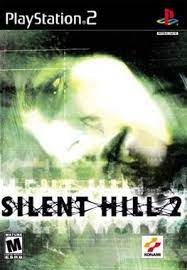
Yeah, so if it wasn’t obvious from those opening two paragraphs, I really like Silent Hill. It’s a beautiful mix of violent imagery and haunting emptiness; of psychological horror and in-depth character studies. The characters feel vulnerable and realistic, trapped in an insane world that’s only vaguely understandable through symbolism at best. The highs of the series are genuinely some of the best horror experiences I’ve had, and the lows are…um, moving on.
I haven’t actually played all of the games in the series, but of the ones I have, Silent Hill 2 is my absolute favourite, because, yeah, I really am that mainstream and predictable. I had a tough time with Silent Hill 4 and, to be honest, didn’t beat it - but that’s mostly because in the second half of the game I felt so vulnerable and weak that it was too much for me to play. If that’s not a good endorsement of a horror game, then I don’t know what is. Shattered Memories is another highlight of the series, and while it’s quite different to the rest of the series, I think that it’s an experiment that paid off. Am I just saying that because I got the best ending on my first playthrough? Partially.
Of the remaining games in the series, I haven’t played 1, 3, or Downpour, although I’d like to remedy the latter two at some point. (How does the latter go with PS3 emulation? Asking for a friend). I didn’t finish Origins, which was alright but not that memorable, and Homecoming is, honestly, not as bad as the fandom says it is? Yeah, it’s very…Western, for lack of a better term, but there’s some good boss designs and I’ve played far, far worse games than it. It’s a weak Silent Hill entry, but not a bad game overall.
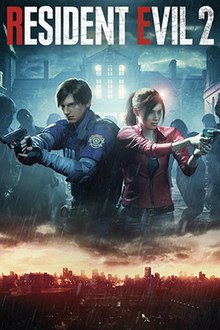
Yes, I really am following up one of the most popular horror gaming series by saying that I also like the other really popular horror gaming series. Predictable? Me? I will add the caveat that I haven’t really played that many Resident Evil games, and that I wouldn’t class most of them as horror games - more like action games with some horror elements.
But of the games that I have played and do consider to be horror games - namely the remakes of the first two games? Man, they’re excellent. The first game takes all of the good elements of point-and-click adventure games as you slowly proceed through the mansion and solve puzzles, providing a nice respite from the monsters. The monsters themselves, while nothing amazing in terms of designs, are very nicely balanced in difficulty - you never feel as though you’ve got no chance against them, but you also know that you’re going to need to be cautious and play it safe if you don’t want to run out of resources. It’s a great level of tension that does exactly what it sets out to.
The remake of the second game, by comparison, pretty much takes all of that and improves upon it. There’s a constant tension as you debate over which windows to board up, or anticipate returning to an area that was full of zombies but which now has a newly accessible room in it. The gameplay is one of the smoothest third-person shooters I’ve played, and it never feels like it’s the game’s fault when you miss a shot or screw up.
The stories of both games are fairly cheesy, though.
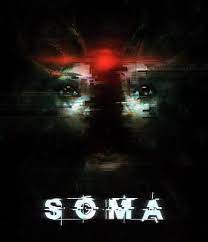
SOMA is a bit different from the rest of the games on this list in that the horror in it is less in the gameplay, and more in the story. In fact, I’d say that when the game does have a horror moment in its gameplay, it’s overall fairly weak and frustrating more than anything. There’s an option to turn off enemies throughout the game, which I didn’t use out of fear of missing out on core gameplay, but I feel that if I had used it I would have had a much better time with the game.
So, what makes the story so good then? I won’t spoil it but it is, bar none, the best story I have ever experienced in the realm of existential horror. It’s a story that I still dwell on years later, that makes me think about the reality of things, of being unable to trust what is and isn’t real. It’s a story about how vulnerable our minds are, and how much we rely on our assumptions. And it’s fucking fantastic.
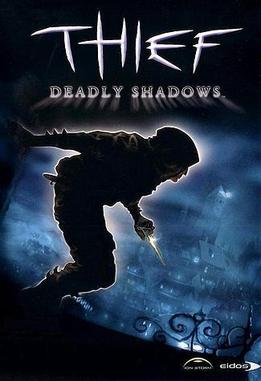
Technically, this isn’t a horror game, it’s a stealth game, but if you’ve played it then you know exactly what I’m going to talk about and why it’s on this list. It’s the level so memorable that the series’ mid-tier not-reboot a decade later felt obliged to include its own version of it, and the one that gave me my first proper taste of horror and kept me up quite late at night. It’s the Shalebridge Cradle, the asylum/orphanage that blends a creepy story together with great gameplay to create an unforgettable experience.
What makes it such a good experience? For the majority of the game, the levels you’ve been going through have had assorted numbers of enemies that you need to sneak past (or boff on the back of the head, if you’re me). Yet when you arrive at the Cradle, there are no enemies to be found. The desolation is eerie, so you’re sneaking around cautiously despite the lack of any threats, out of habit if nothing else. If you try and double back the way you came, you find that the entrance you came in through is mysteriously barred. Just when you’re starting to get used to the solitude of the asylum, you walk up some stairs to an attic and are greeted by a booming knock at the door.
There’s a lot more to the level than just that - the backstory alone, if nothing else, is creepy as hell - but hopefully that illustrates what the level does to unnerve you, and how effective it is. I’d also like to take the time to point out that beyond Robbing the Cradle (the name of the level where you visit the asylum), the game has quite a few scary moments - there’s the ship full of zombies, the undead Hammer Haunts, a memorable ambush by the game’s main antagonist and their animated statues…The game as a whole knows that overdoing horror makes it become the new normal for players, and wisely paces out its scares to fantastic effect.
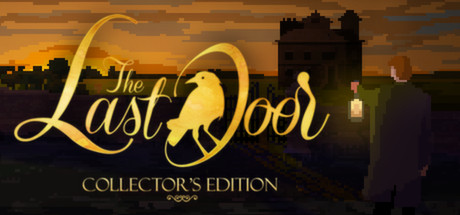
Consisting of two games - The Last Door and The Last Door: Season Two - I haven’t really seen this duology talked about much. It’s a pity, because I think that a lot of people are missing out on something really special here - the story and atmosphere in both games is absolutely fantastic, and the puzzles manage to hit that ideal level of difficulty, where you never have to go pixel hunting for items or leap into the realms of insane logic to solve something. Is it the intentionally retro graphics that are keeping it from finding a wider audience? If so then it’s a pity, as they absolutely suit the tone and only serve to enhance the experience.
The opening of the first game will always stick with me as something that immediately grabbed my attention and refused to let go. After starting a new game, you’re taken to a room where you have a small puzzle to solve as we keep cutting to some ominous text which turns out to be a letter sent to the protagonist. What’s the puzzle, you ask? Why, simply to gather a rope and chair and hang yourself, no biggie. It immediately raises questions about the situation and sets the dark tone of the game, accomplishing everything that it sets out to do.
From here, players take control of the game’s actual protagonist as they investigate what’s happened here and how it all ties back to them. The game has a heavy influence from the works of Edgar Allan Poe and H.P. Lovecraft, and something that I really like about it is that it never feels derivative. Instead, it feels as though the creators looked at what they liked in their inspirations and created their own takes on them. If that was the intent then it’s one that they absolutely pulled off, and I hope that more people discover this fantastic duology.
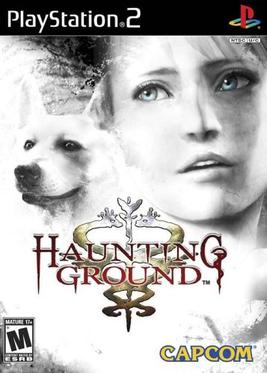
I think that I first heard of Haunting Ground when I read some trivia about Resident Evil 4 somewhere, saying that the dog Leon can (and should!) rescue is from Haunting Ground, which was also in development around the same time as Resident Evil 4. I didn’t really take it in at the time, but years later (this year, in fact), I ended up hearing more about the game and decided to give it a go. I’m so glad I did, because it’s a game that I think was overshadowed by Resident Evil 4 for a long time, but is absolutely worthy of playing.
The game begins when the protagonist Fiona is left to explore - and hopefully escape - a large castle after she wakes up in it following a car crash. After a fairly safe start in which the player can’t die, but can see some pretty unnerving things, they soon wander into the main gameplay loop - they’re constantly being hunted down by a stalker, with the exact role changing between different characters as the plot progresses. Minus a handful of limited items that are a nuisance to the stalkers at best, Fiona can’t defend herself, so the player’s only remaining options are to run and potentially hide.
This sounds like something that you’ve probably seen before, but the game manages to control everything in such an effective way that it still feels unique and, more importantly, terrifying. Multiple times I’d be hiding somewhere and climb out, only to find that the stalker hadn’t gone as far away as I’d hoped, or I’d be heading to a different area of the castle and start shitting myself as the current stalker’s theme started up. I felt hunted and vulnerable throughout the entire game, even with the aid of Fiona’s fantastic dog companion, Hewie. While I unfortunately can’t say that the game’s story did much for me, the gameplay more than made up for it and there was no hesitation to including Haunting Ground on this list.
There are a few more games that I could have included on this list, but I decided to restrict it to games that I consider to be some of the best and still hold up brilliantly for me, rather than letting horror games with a mix of good and bad parts sneak into the list. What did you think of it? Are there any horror games that didn’t appear on the list that you’d recommend, or any on the list that you disagree with? Let me know here and if necessary, I’ll work on a follow-up! Until then, stay safe and stay excellent.
Back to news